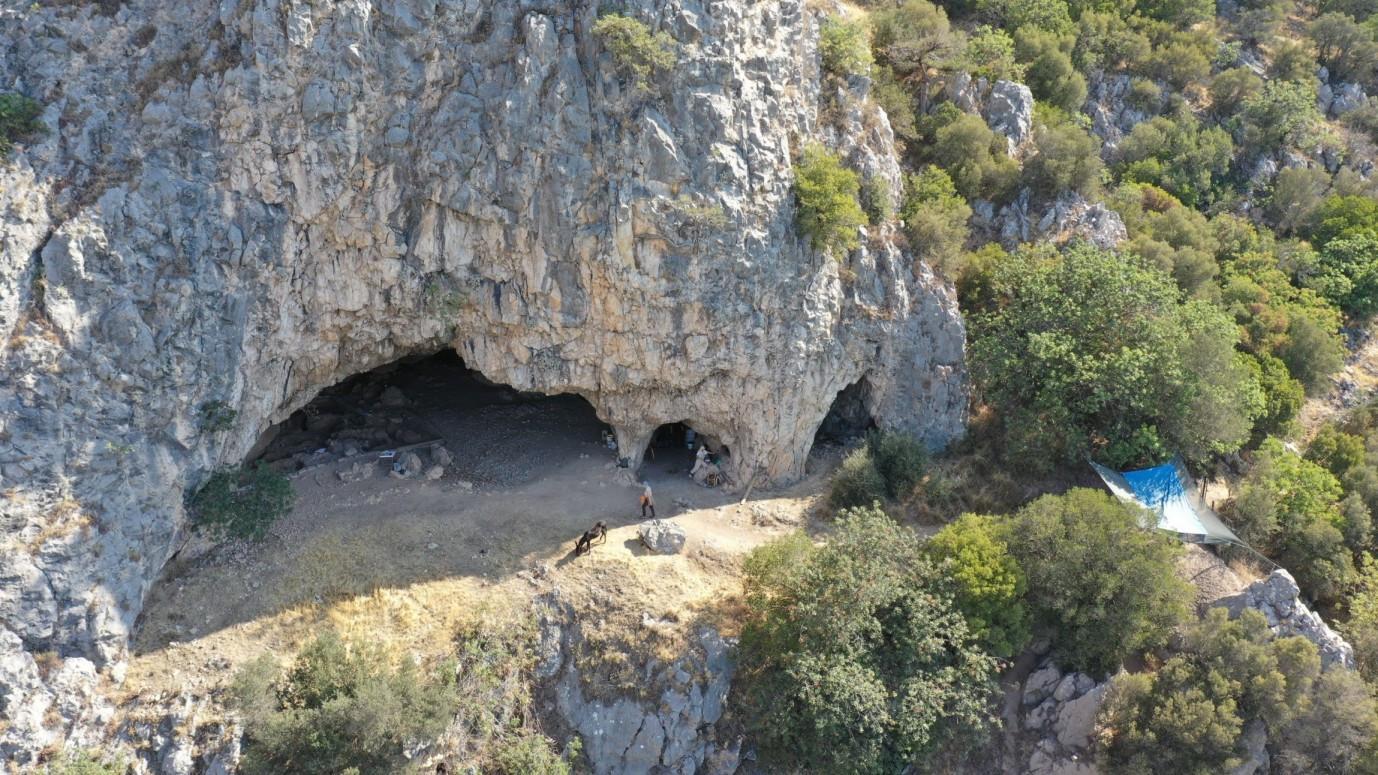
Archaeologists in the northwestern province of Balıkesir’s Havran district are exploring Andık Cave for historical clues, navigating challenging rocky terrain to reach it.
Located about 2 kilometers from the İnönü neighborhood on Kocaçal Hill’s İnboğazı area, Andık Cave was first discovered in 1949 by Professor Kılıç Kökten.
At dawn, the excavation team leaves its house in the İnönü neighborhood and drives to Kocaçal Hill by an off-road vehicle. From there, they unload water supplies onto a donkey and walk in single file about 500 meters to the cave through a narrow, rugged path. After the demanding journey, they begin their work inside the 59-meter-deep cave, which features multiple galleries.
Excavations have uncovered numerous ceramic vessels, stone and bone tools, as well as cave wall paintings depicting a mountain peak and a leopard figure.
Yalçıklı said the team began excavations in 2022 and is currently working in the northern and eastern galleries.
“Our focus is on prehistoric layers. There is an intensive prehistoric settlement here. We have identified Neolithic and Chalcolithic layers in detail in recent years,” he told state-run Anadolu Agency.
He noted that the cave was also used during later periods, including the Late Bronze Age (1500-1400 B.C.), the Archaic Age (546 B.C.) and the Byzantine era after 1204. Ritual practices were observed during those times, and in more recent centuries, the cave was even used as a sheepfold.
Yalçıklı emphasized that the excavations mainly target the Neolithic and Chalcolithic ages.
“According to carbon analysis, we have reached as far back as 6700 B.C., which is one of the earliest known dates for this region,” he said. “The cave was used for settlement in different phases of the Neolithic and Chalcolithic ages. We have identified living floors, hearths and various structures in different galleries.”
The finds include everyday ceramic vessels, stone and bone tools. Yalçıklı said the potential of the site could sustain excavations for the next 20-25 years.
“This site will make a major contribution to our understanding of little-known periods in this region,” he added.